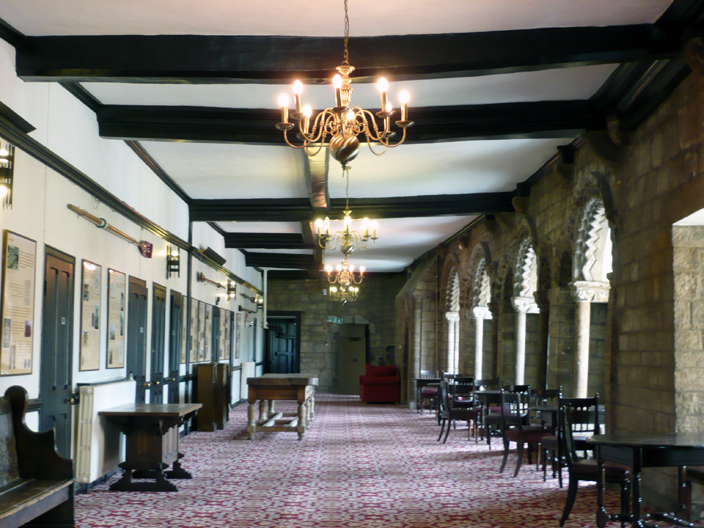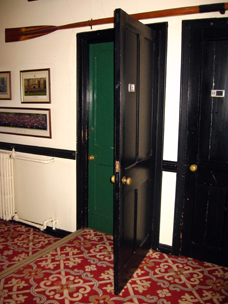Today a very wide corridor, the Norman Gallery would have originally been a large Norman Hall.
Built during the Bishopric of Hugh Le Puiset in the late 12th century, it was later subdivided in the 19th century to create student bedrooms. Despite having changed in form, it still retains much of its architectural detailing. Its stone carving would originally have been brightly painted.
Before its subdivision, the Norman Hall would have offered excellent views to the north – essential for defensive purposes. The Castle's strategic location as a look-out can still be understood by the views from the western end of the Norman Gallery.

The Norman Gallery retains its original length but not its width. The chevron (zig-zag) decoration on its arches would have originally been brightly painted.

Sporting one’s oaks – a distinctive ‘old universities’ tradition, refers to the precursor of ‘do not disturb’ signs. When the outer door is ajar, like this one is, it means that the occupant is in and does not mind being disturbed.
The Gallery Today
The Norman Gallery Today is the home of the College JCR Exec. (the Junior Common Room Executive Committee). These are members of the undergraduate body of the college who are elected to represent their peers for a one-year term. Living on the Norman Gallery is one of the perks the Exec gets for the extra effort they must put in to run the student affairs of the college and organising events.
Sporting the Oaks
Among the noticeable features of the student rooms on the Norman Gallery is the fact that they each have an inner and an outer door – a peculiarity of historic British Universities.
The outer door serves as a ‘do no disturb sign’. If the outer door is closed, this means that the occupant is out, or does not wish to be disturbed. If the outer door is open, it is alright to knock on the inner door. Traditionally, the outer doors were made of oak, and the system is known as ‘sporting the oaks’.

